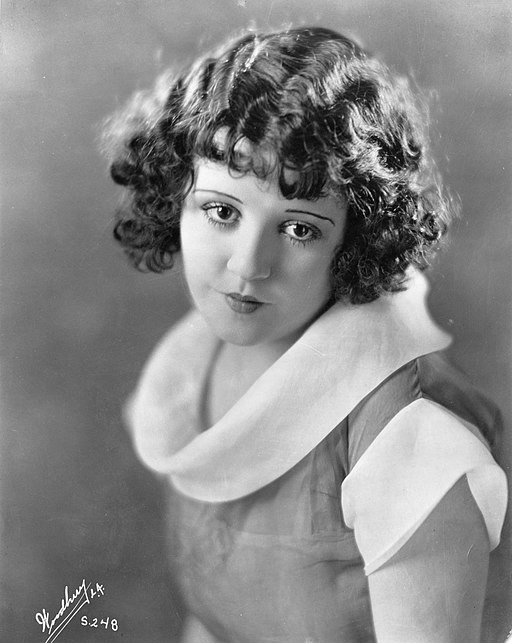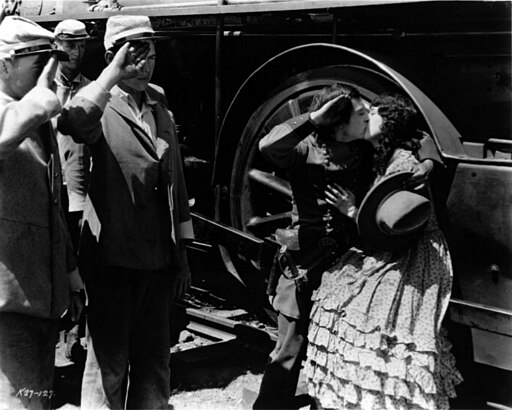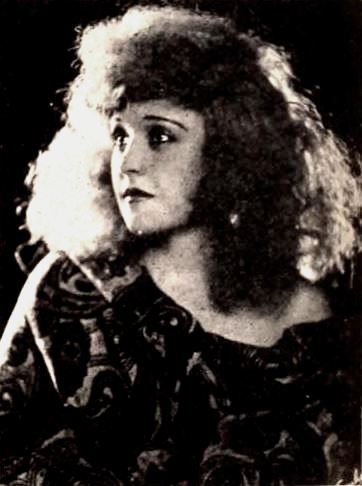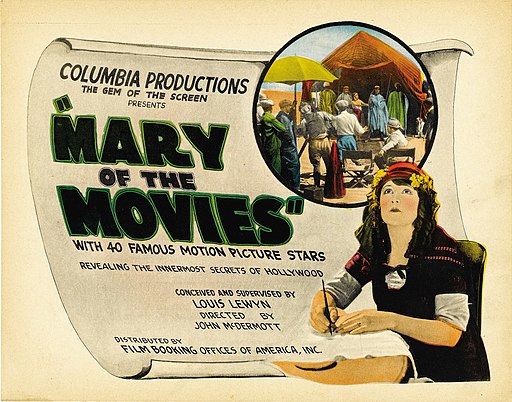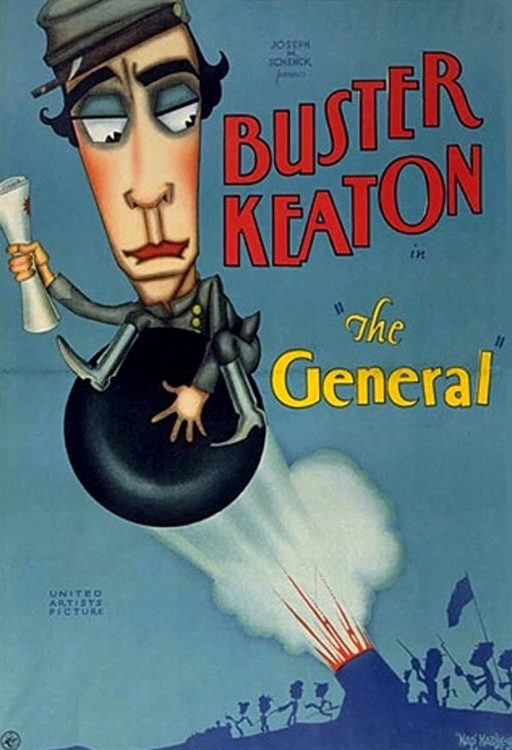Marion Mack
back| Full Name | Joey Marion McCreery |
| Stage Name | Marion Mack |
| Born | April 8, 1902 |
| Birthplace | Mammoth, Utah, USA |
| Died | May 1, 1989 |
| Buried | Her ashes were given to her family |
| Married to | Louis Lewyn, a film producer known for his work in the movie industry, particularly during the early to mid-20th century. Their marriage lasted until Lewyn's death in 1969. |
| Children | Unknown |
| Notable films | The General (1926) - Mary of the Movies (1923) |
Marion Mack
Spirited Silent Film Actress
Marion Mack's career transitioned from acting to screenwriting after her marriage, as she and her husband worked together on various projects. Despite her retreat from the limelight, her legacy, particularly her role in "The General," continues to be celebrated for its contribution to the silent film era and cinema as a whole.
Related
Marion Mack (1902 – 1989)
Biography and Career Overview
Marion Mack, born Joey Marion McCreery on April 8, 1902, in Mammoth, Utah, embarked on a journey that would see her leave an indelible mark on the silent film era of Hollywood. Her career, although brief in the spotlight, was marked by her memorable performance in one of the silent era's most celebrated films, "The General," alongside Buster Keaton.
Early Years and Ascent to Stardom
Marion's early life in Mammoth, a small mining town, was far removed from the glitter of Hollywood. The details of her upbringing are scant, but it's known that she possessed a natural allure and an early passion for the performing arts. Her move to Hollywood in the early 1920s signified the beginning of her journey in the film industry. She started her career under her birth name but soon adopted the stage name Marion Mack.
Mack's entry into Hollywood was timely, coinciding with the silent film era's golden age. She appeared in a series of minor roles, which, while not leading to immediate stardom, gradually built her portfolio and reputation in the industry. Her breakthrough came with the 1923 film "Mary of the Movies," where she played a significant role. However, it was her casting as Annabelle Lee in Buster Keaton's 1926 masterpiece "The General" that cemented her place in cinematic history. Her portrayal of the film's female lead was both charming and spirited, contributing significantly to the film's enduring legacy.
Path Towards Success
Despite the success of "The General," Marion Mack found substantial roles hard to come by in the ensuing years. The transition to "talkies" and the evolving dynamics of Hollywood presented challenges. Recognizing the shifting landscape, Marion gracefully transitioned from acting to behind-the-scenes work, focusing on screenwriting and collaborating with her husband in the film industry.
Personal Life and Passions
Marion Mack's personal life was notably marked by her marriage to Louis Lewyn, a film producer. The couple's partnership extended beyond their marriage into professional collaborations, with Mack contributing as a writer to several projects that Lewyn produced. Their relationship was a testament to their shared love for cinema, a bond that evidently enriched both their personal and professional lives.
Little is known about Marion's life outside of her marriage and career, indicating a preference for privacy. Her passions, apart from her evident love for film and storytelling, remain largely unpublicized, painting the picture of a woman who valued her personal life's sanctity away from the public eye.
Death and Legacy
Marion Mack's journey came to a close on May 1, 1989, in Costa Mesa, California. She passed away from heart failure at the age of 87. While the details of her final resting place remain private, her legacy is anything but. Marion Mack is remembered not only for her role in "The General" but also for her adaptability and resilience in an industry known for its transience. Her transition from actress to screenwriter exemplifies her passion for the craft of storytelling, regardless of the medium.
Marion Mack: A Short Overview:
Notable Movies featuring Marion Mack:
1923: "Mary of the Movies"
Synopsis: In this silent comedy, Marion Mack plays a version of herself in a fictionalized account of a young woman's adventures in Hollywood. The film humorously explores the trials and triumphs of making it in the movie business, offering a behind-the-scenes look at the silent film industry.
1926: "The General"
Synopsis: Marion Mack stars as Annabelle Lee, the love interest of Johnny Gray (played by Buster Keaton), a train engineer. When the American Civil War breaks out, Johnny attempts to enlist but is rejected. Unbeknownst to him, he's more valuable as an engineer. Annabelle is mistakenly captured by Union spies, leading Johnny on a daring rescue mission aboard his beloved locomotive, "The General." This film is renowned for its intricate action sequences, comedic timing, and the emotional depth brought to the characters by Mack and Keaton.
These films highlight Marion Mack's versatility and charm, which endeared her to audiences of the silent film era. "The General," in particular, has endured as a masterpiece, celebrated for its technical innovation, narrative ingenuity, and the chemistry between its leads. Unfortunately, many of Marion Mack's other films have been lost or remain lesser-known, which is a common fate for many works from the silent film era. Her transition away from acting and into screenwriting after her marriage means that her later contributions to cinema were behind the scenes, further focusing her legacy on these early performances.
The Acting Style of Marion Mack:
Marion Mack's acting style, while reflective of the silent film era's expressive demands, carried a distinct blend of charm, vivacity, and emotive depth that set her performances apart. Silent cinema required actors to convey narrative and emotional subtleties without dialogue, relying heavily on facial expressions, body language, and physical comedy. Mack's style was emblematic of these requirements, yet she infused her roles with a unique personal touch that resonated with audiences.
Expressiveness and Emotional Range
Marion Mack possessed a remarkable ability to express a wide range of emotions through her facial expressions and gestures. In "The General," for instance, her portrayal of Annabelle Lee showcased not just the damsel-in-distress archetype prevalent in many silent films but also moments of courage, comedic timing, and genuine affection. Her expressive eyes were particularly effective, capable of conveying fear, love, surprise, and resolve, often within the span of a single scene. This ability to transition smoothly between different emotional states, purely through non-verbal cues, highlighted her acting prowess.
Physical Comedy and Grace
Another notable aspect of Mack's acting style was her adeptness at physical comedy. In an era where slapstick and physical humor were staples of cinema, Mack demonstrated a knack for comedic timing and physicality that complemented her male counterparts, especially evident in her interactions with Buster Keaton. Her movements were graceful, yet she could effortlessly engage in the more physical aspects of comedy, making her performances both elegant and relatable.
Relatability and Screen Presence
Marion Mack had a relatable screen presence that endeared her to the audience. Her characters often embodied a blend of vulnerability and strength, making them both aspirational and accessible. In "The General," her role required a delicate balance between being the cause of comedic mishaps and a resilient heroine, a balance she maintained with aplomb. Her ability to elicit sympathy and laughter, sometimes within the same scene, was a testament to her nuanced understanding of her characters.
Contribution to Silent Film Acting
Mack's acting style contributed to the silent film era's narrative richness, proving that dialogue was not necessary to convey complex characters and emotional depth. Her performances underscored the importance of physical expressiveness and the actor's ability to connect with the audience on a visceral level.
Though her body of work was not as extensive as some of her contemporaries, Marion Mack's acting style left a lasting impact on the silent film genre. Her performances continue to be studied for their blend of emotional depth, comedic talent, and a timeless appeal that transcends the silent era's technological limitations. Through her work, particularly in "The General," Mack provided a masterclass in silent film acting, demonstrating that the power of cinema to evoke emotion and tell compelling stories does not rely solely on words.
Recognition for Marion Mack:
Marion Mack, known primarily for her work during the silent film era, did not receive contemporary awards or nominations in the way actors are recognized today. The film industry's award systems, such as the Academy Awards, were not established until the late 1920s, after Marion had made her most significant contributions to cinema.
Her most notable film, "The General" (1926), directed by and starring Buster Keaton, is now considered a masterpiece of silent cinema and has received considerable posthumous recognition. While Marion Mack herself did not receive awards for her role in this or other films during her lifetime, her performance in "The General" has been celebrated by film historians and critics in the years since.
The film has been preserved in the United States National Film Registry by the Library of Congress for being "culturally, historically, or aesthetically significant," a testament to its importance in film history and indirectly to the contributions of its cast, including Marion Mack.
Though Marion Mack's individual contributions were not formally recognized with awards or nominations during her career, her legacy is intrinsically linked to the enduring success and historical significance of "The General." Her work continues to be appreciated by audiences and scholars alike, highlighting the impact she had on the film industry, even in the absence of formal accolades.

